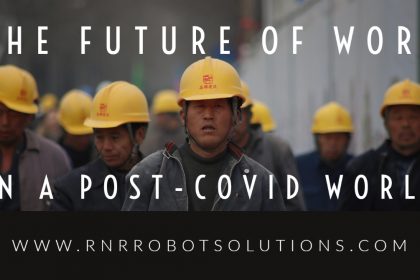Our robot case study shows how we worked with our partner, Ian Wilson from WM Robotics, to implement an automated robotic solution for a pallet manufacturer.
Why use robots?
Many pallet manufacturers have installed pallet making machines, which come with limitations. Typically, such a machine needs 3 workers to run the process. There are also in-built restrictions on the flexibility of these machines: pallet manufacturers can produce 20 different designs for a pallet. To change from one specification to another can take up to 2 hours on a pallet making machine.
The Benefits of Automation
The business continues to run their original production line with a 3 man team. They moved just one member of the team over to manage the robotic production line. He had previously been employed to fix broken pallets, so his skill level and job satisfaction has greatly improved. The business has effectively doubled their production and improved efficiency using the same number of workers. Compared to the usual pallet making machine, changeover from one pallet specification to another takes a matter of minutes rather than hours achieving much greater flexibility, reducing machine downtime and improving productivity.
The Solution
We designed a solution which deployed 6 Motoman 165K EH165 robots, chosen for their robustness and reliability. Additionally, the robots used in this project were refurbished used units which require a lower capital investment and achieve a far more rapid return on investment. A new power supply was required, although the overall power requirements for running the robots is low – each robot requiring the equivalent electricity of 2 domestic fan heaters.
To see a longer version of the whole manufacturing process, go here.
Why choose used robots?
The prime motivator is obviously cost – our 6 robot solution came in far cheaper than deploying new kit. As all our used robots are fully reconditioned and guaranteed, they represent excellent value for money and are able to deliver a rapid return on investment.
Safety
The safety requirements are paramount. The manufacturing process is secured with light curtains at various stages. If the laser light in these curtains is interrupted by even the smallest movement the system shuts down. The final stage of the process, where the finished pallet exits the manufacturing area the light lasers work one way, allowing the finished product to travel out. If anything, or anyone, travels into the space, an automatic system shut down is triggered.
Additionally health and safety is vastly improved particularly in the respect of lifting. Where previously humans would be required to move half-finished pallets into position, the robotic process requires the maximum they are required to lift is just one board. Humans are also shielded from the nailing process, which was a high-risk activity.
Productivity
One member of staff runs the whole robot manufacturing process. Currently, this is for one shift per day, manufacturing a similar number of pallets to the human production line – approximately 550 pallets per day. The potential is there to dramatically increase production by utilising more shifts. Downtime for the robots is limited to a daily clean, to remove dust from the manufacturing area, and more intermittent maintenance and yearly service.
Conclusion
Given the investment in automation, savings on staff costs and the potential for increased productivity, we would expect the manufacturer to have covered his investment within 4 years.
Whilst pallet making machines have been available for many years, they offer limited flexibility. Our robot solution provides the manufacturer with dramatic improvements in productivity and the ability to quickly and easily shift from the manufacture of one type of pallet to another and a fast and substantial return on investment.
Our partners in this project, WM Robotics, are specialists in the manufacture of electronic industrial process control equipment. Their MD Ian Wilson is an enthusiastic advocate for robotics saying “anything is possible – they can be used in many manufacturing processes to improve efficiency and the standard of manufacture as well as safety.” He is currently working on diverse designs from stacking trays of eggs to using high powered saws for the removal of metal components from waste plastic designated for recycling.
For more information on how we can develop automated manufacturing processes to improve your productivity, don’t hesitate to contact us here.









